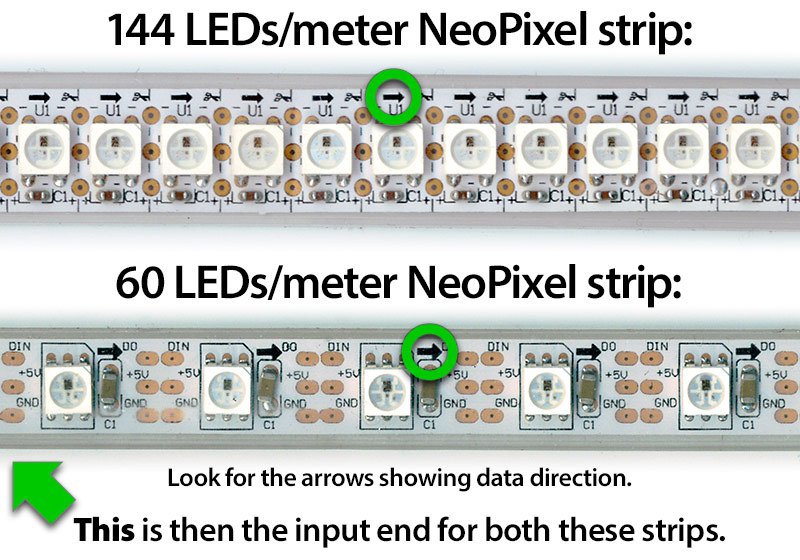This is a cross post between this blog and my podcast. I realized that this blog has more reach than the podcast does because it’s new, so I am posting the script from that podcast here.
Transcript
This is a special episode of Janie Rants.
I have been asked a lot of questions about a series of tweets I posted on Twitter last night. In these tweets, I said that this was the first time I felt like I was unwelcome in the iOS programming community.
Like many things on the internet, this is a long and complicated story and it was not really conducive to the short format and tempers of Twitter, so I will try to do my best to explain myself here.
At the moment I am between jobs and I am trying to figure out how to proceed. I am trying to see if I can make it as a contractor but I have also been looking into obtaining regular work as well.
I posted a blog post a few weeks ago about an experience I had interviewing at a rather large and well known company that had a white board interview where I was being asked to implement a linked list in Java.
I expressed that I felt this was a useless task.
I got a lot of pushback from people on Twitter about this. A lot of older programmers chastised me that you can’t be a great programmer if you don’t understand data structures and algorithms. I tried to make the point that if you are an iOS developer that most of your job is to have knowledge of the iOS frameworks and that the language is secondary. Someone who had never owned a Mac or opened Xcode could theoretically get a job as an iOS developer.
I continued to get pushback about the absolute importance of algorithms and how someone implemented a linked list once in their career. I asked whether it was more important to be able to answer a question about something you might do once in ten years or about something you would use every single day. I don’t think I got a response to that.
I did a phone screen where I was once again told that the tech aspect of the screen involved doing an algorithm test. I expressed frustration on Facebook about once again being asked to do an algorithm test for an iOS position.
One person on there told me if I spent all the time I used complaining about algorithms to actually learning them I would know them by now. He also criticized me for not being willing to implement well known algorithms and structures that are simply not part of the Swift Standard Library. This hurt my feelings because this was a person I considered a friend.
Another person made the comment that really prompted my series of tweets last night. He said that he asked algorithm questions because he wanted to make sure he worked with the “right” people who has the “right” skills and could talk “his” language.
I know that to most of you listening out there, you probably hear that and don’t give it a second thought. Let me decode this for you.
Algorithm questions are not a way to make sure you’re hiring someone who is capable of coding. Algorithm questions are a way to discriminate against certain kinds of people.
I know, you think I am paranoid. You think this is some kind of conspiracy theory or that I am somehow claiming sexism because I am a bad programmer or I am too lazy to learn these things. Please hear me out.
My first experience learning programming was from Code Cademy online. I accepted a terrible job that my ex-husband would not let me quit where our team lead did not know what we were supposed to be doing, so he told everyone to pretend to work and to look busy.
To keep the suicidal thoughts at bay, I went on Code Cademy to learn programming. I had taken some programming classes, but had only coded things once and subsequently never practiced it enough to understand it.
I discovered that if I wrote code forty hours a week that I could learn programming. I could type code as easily as I type an email and the logic finally made sense. This was a revelation to me. I had given up on programming because I thought it was too hard and I could never learn it. I found that if I put in enough time and effort I could learn how to code.
I got myself fired from that job and went on unemployment. In the state of Wisconsin, if you’re on unemployment you can stay on it as long as you’re going to school to learn a trade. I re-enrolled at the local tech college and started taking iOS classes to learn iPhone programming.
A lot of people learn programming from sites like Ray Wenderlich or from the Big Nerd Ranch books. Lots of people spend thousands of dollars going to code bootcamps.
President Obama has talked about how he wants all kids to know how to code. Apple has added Swift Playgrounds to the iPad to teach kids to code. We’re inundated with messages everywhere that learning programming will lead to a better life. We’ll get better jobs and earn more money and be able to start companies.
None of these paths to programming include algorithms or data structures.
I spent two years trying to scrape up enough iOS experience to be able to get an entry level job. It was brutal learning Objective-C. It was brutal learning about the Model View Controller design pattern. Asynchronous closures. Memory management.
iOS is not a simple framework to learn. There are a lot of moving parts and there is a tremendous barrier to entry to get to a point where you have accumulated enough experience of working with the frameworks and the devices and the compilers to be able to be somewhat proficient with iOS.
So why the fuck do we quiz people of fucking algorithms?
We do that to keep people like me out.
If you have a six week coding boot camp, you’re going to teach people the bare minimum that they need to make something useful. You’re not going to spend weeks talking about data structures and algorithms.
The only people who know about data structures and algorithms are people who got computer science degrees or have been around for so long that they learned it on their own.
This discriminatory practice is written off as a meritocracy. Anyone can learn this stuff if they’re ambitious and smart, so it’s the standard against which all people are held.
Let me tell you about another standard we don’t think about: The SATs.
We think of the SATs as being fair. Everyone receives the same test. Everyone has the same time limit. Everyone has the same equipment. It’s fair, right.
Nope.
If you come from an upper middle class family, you probably had some help with the SATs. I went to a private Catholic high school that specialized in college prep. My parents bought me books that helped me figure out how to get better scores on the SATs. I had practice tests I could take with instructions about what the right answer was and why. It explained to me how to see a trick question and gave me strategies for getting around them.
Both of my parents had college degrees and were in education. It was expected that I would go to college. I didn’t have to have a job because my parents paid for my college, so all I had to do when I was in high school was study. When I didn’t like the score I got on the first test, I took it again. I could take the test as many times as I wanted and each time I took it my score got better because I got practice.
I can stand by my scores and talk about how I earned them through hard work and how the system is a meritocracy because I did marginally better than a few other people with the same privilege I had. But that’s not a complete story.
Take a student living in a poor community in Mississippi. This student might go to a school where they teach creationism instead of evolution. This student has no expectation of ever going to college. This student doesn’t know that there are resources out there to help them do better on the test. They don’t know about the trick questions. Their school doesn’t offer algebra because no one would take it anyway.
Does the test honestly reflect this person’s potential?
This theoretical person could be a genius. But they don’t have the cultural context to know what they are supposed to do in order to move from the sphere they are now to the better one brought by money and education.
I know so many of my classmates from my school who have trouble finding jobs. There are so many road blocks that are set up to keep the wrong people out. You have to have a GitHub repository and a Stack Overflow account with a certain amount of points. You have to contribute to open source. You have to present at meet ups.
We create so many barriers to entry for people who are culturally unfamiliar with what the community expects and we set these up to keep people out. We like to feel like we’ve earned our place in the community and we don’t want to deal with helping more people enter that we have to compete with.
Knowing algorithms and data structures means that you were privileged enough to get a computer science degree. It means you had enough free time that you learned this stuff on your own if you’re self taught. This assumes you have the money to take time off to learn something that will help you get better jobs.
If you’re struggling to make ends meet because you’re a single parent who can’t get past the velvet ropes to the land of coding opportunity, you do not have time to learn these things. You are told you’re not welcome and you give up.
None of this would bother me so much were it not for how completely useless this exercise is. Yes, knowing data structures and algorithms makes you a better programmer at some point, but if you’re interviewing someone for a job doing iOS development, there are so many other things that are iOS specific that no one ever asks about because for the most part these places don’t know them. You’re getting interviewed by people who don’t know anything about what we do who for some reason are in charge of determining whether you understand things or not. It’s bullshit.
The people who have the privilege to get through this red tape just kind of shrug and accept it’s a necessary evil. Some of them even embrace it and will fight with you tooth and nail about why it’s important for someone to know something they haven’t used in five years.
Yes, I could go and learn algorithms and data structures. I am holding my nose and accepting that this is probably something I must do in order to get better jobs, but that doesn’t mean that I should endorse them because I have the privilege of being able to take a few months off of work to learn something that’s nearly completely useless.
By filtering out anyone who comes from a non-traditional background, we’re ensuring a monoculture in programming. We want diversity, but only if the people we bring in think the same way we do. That’s not true diversity.
We need people who never went to college. We need people who learned by hacking and being tenacious and getting something working. We need people who come from diverse backgrounds who can bring new perspectives to what we do so that we can use technology to make people’s lives better and not just find more invasive ways to gather user data for targeted marketing.
Over the last year I have not felt that this community values those voices anymore. I went into iOS over web and Java because I felt that this community was welcoming to anyone with a curious mind and drive to do better and based on the responses I am getting from people I don’t feel that way anymore. I want there to be opportunity out there for people who are like I was four years ago. In order for that to happen, we need to change how we do our hiring practices or we’re all going to be poorer for it.
Thank you.




